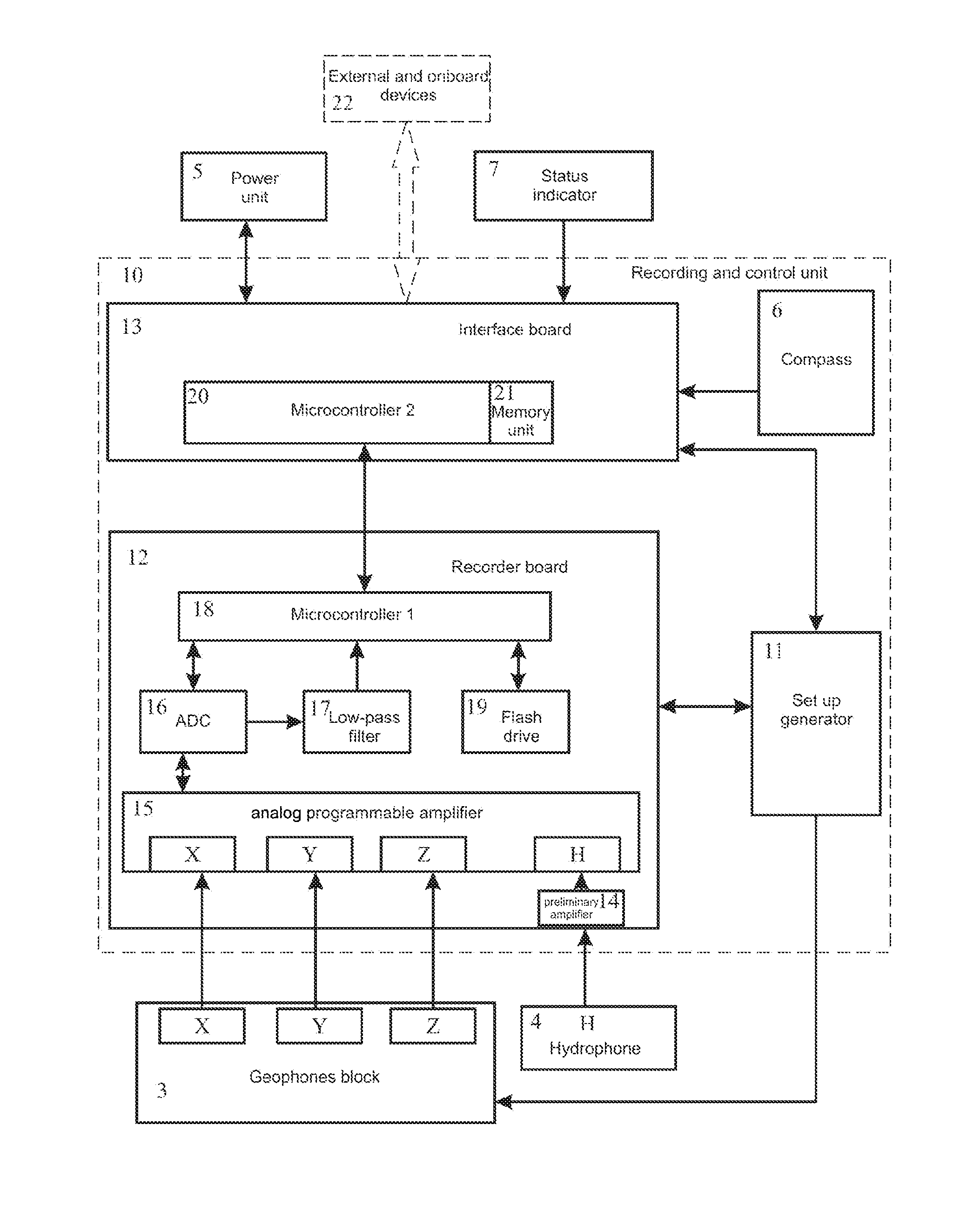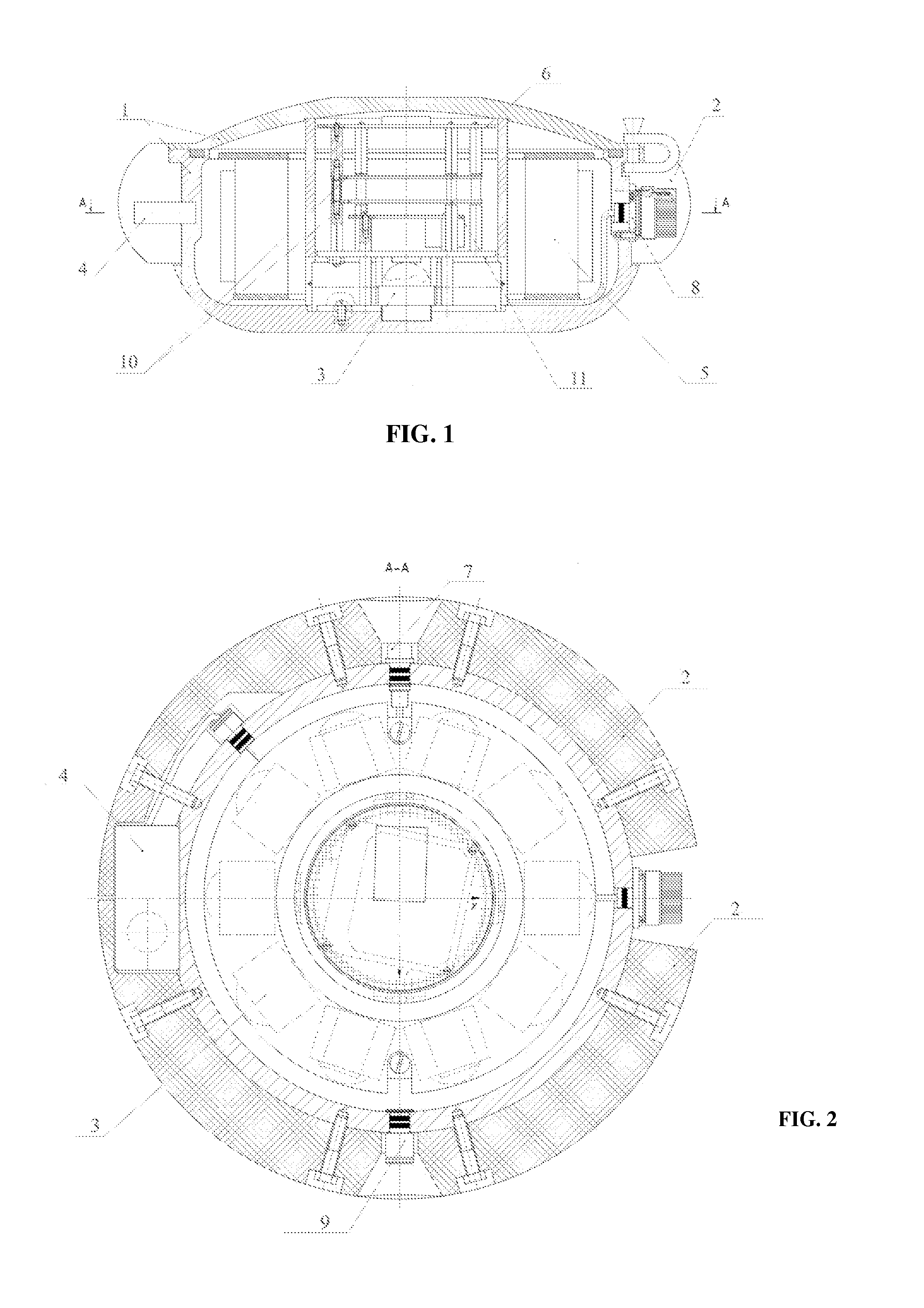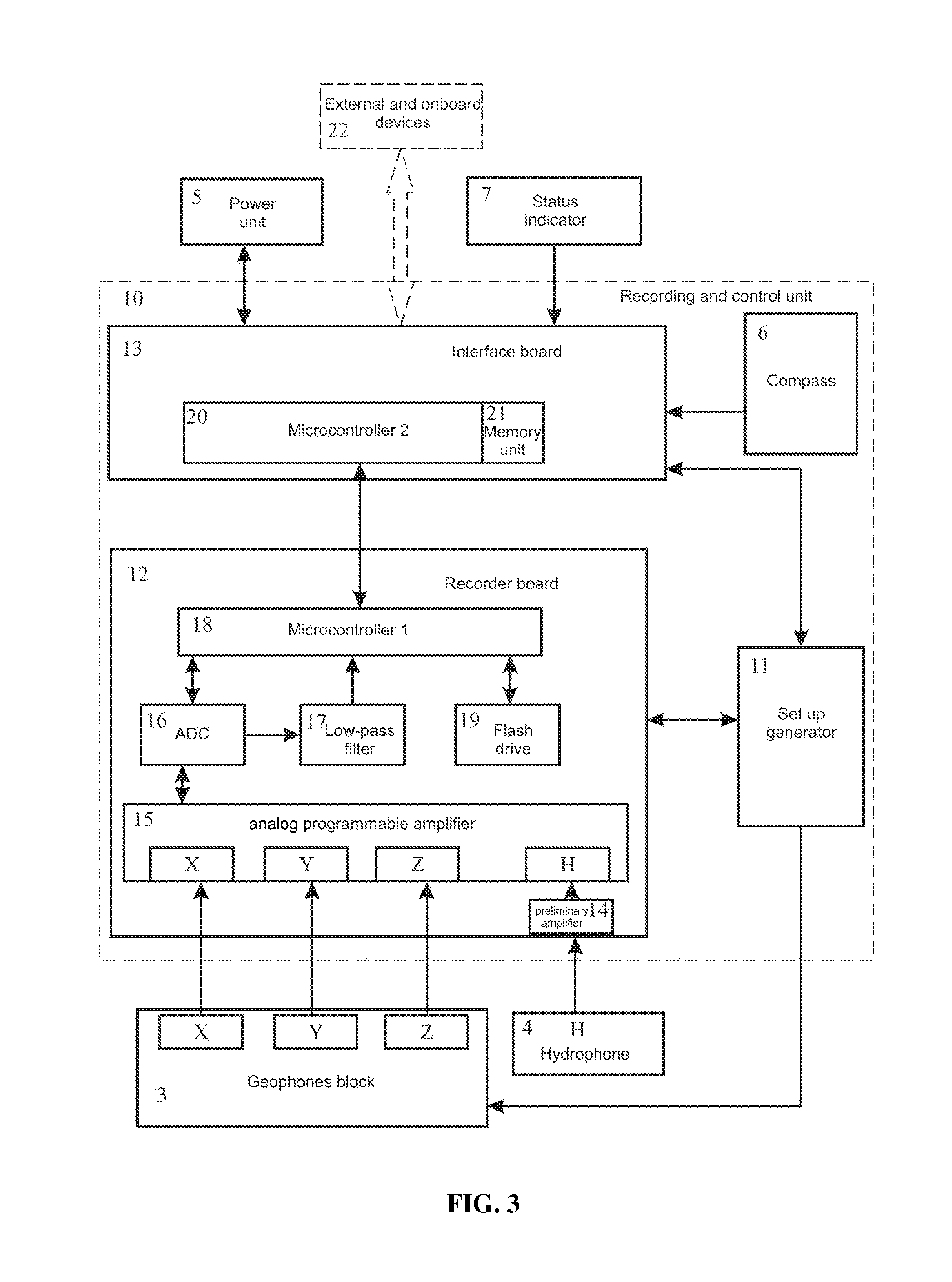Bottom module for seismic survey
a bottom module and seismic survey technology, applied in the field of underwater self-contained bottom modules of seismic stations, can solve the problems of inefficient use of unfolding mechanisms, inability to transfer ground vibrations to measurement sensors without distortion, and inability to transfer ground vibrations to the measurement sensors, etc., and achieve the effect of expanding the range of use of seismic bottom stations
- Summary
- Abstract
- Description
- Claims
- Application Information
AI Technical Summary
Benefits of technology
Problems solved by technology
Method used
Image
Examples
Embodiment Construction
[0028]While the invention may be susceptible to embodiment in different forms, there are shown in the drawings, and will be described in detail herein, specific embodiments of the present invention, with the understanding that the present disclosure is to be considered an exemplification of the principles of the invention, and is not intended to limit the invention to that as illustrated and described herein.
[0029]As shown on the functional flowchart (FIG. 3), the equipment of bottom module comprises: geophysical sensors consisted of a geophone block 3 (including geophones of three channels, denoted as X, Y, and Z) and a hydrophone 4; a recording and control unit 10, including a recorder board 12 and an interface board 13 under control of microcontrollers 18 and 20 correspondingly, wherein the recorder board 12 includes a programmable analog amplifier 15, an ADC (analog-digital converter) unit 16, a low-frequency filter unit 17, and a flash memory drive unit 19; a clock signal gener...
PUM
 Login to View More
Login to View More Abstract
Description
Claims
Application Information
 Login to View More
Login to View More - R&D
- Intellectual Property
- Life Sciences
- Materials
- Tech Scout
- Unparalleled Data Quality
- Higher Quality Content
- 60% Fewer Hallucinations
Browse by: Latest US Patents, China's latest patents, Technical Efficacy Thesaurus, Application Domain, Technology Topic, Popular Technical Reports.
© 2025 PatSnap. All rights reserved.Legal|Privacy policy|Modern Slavery Act Transparency Statement|Sitemap|About US| Contact US: help@patsnap.com



